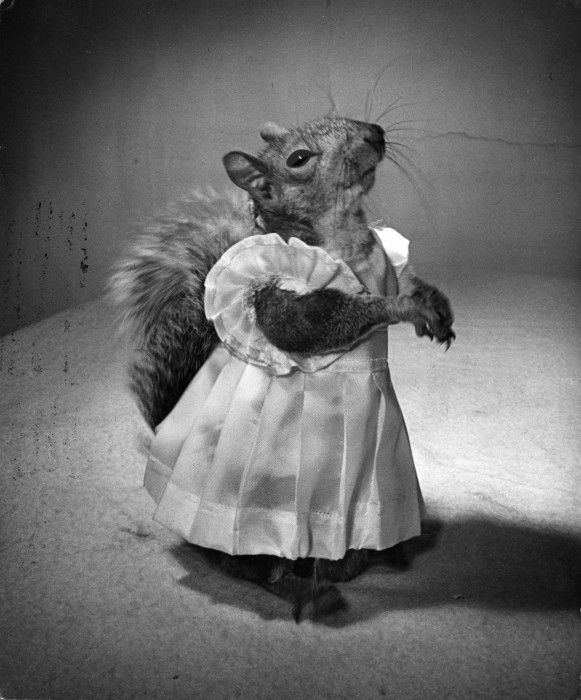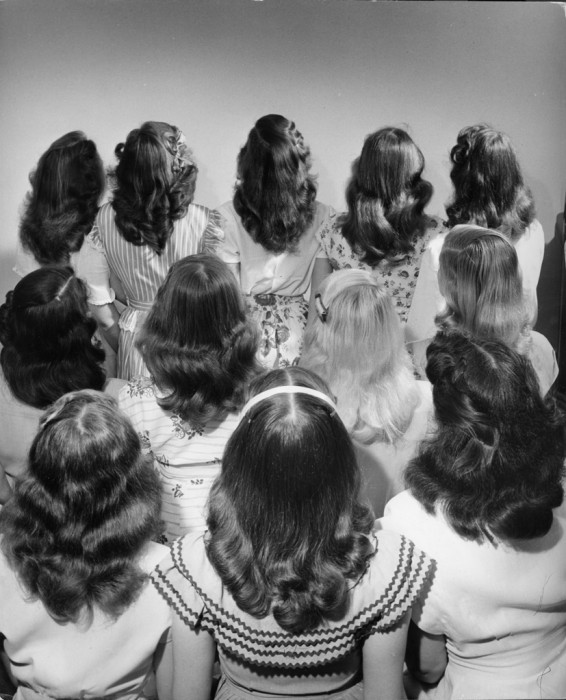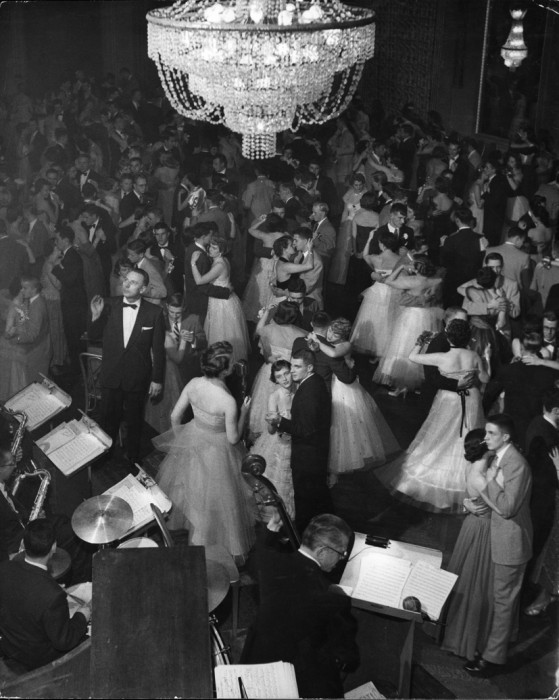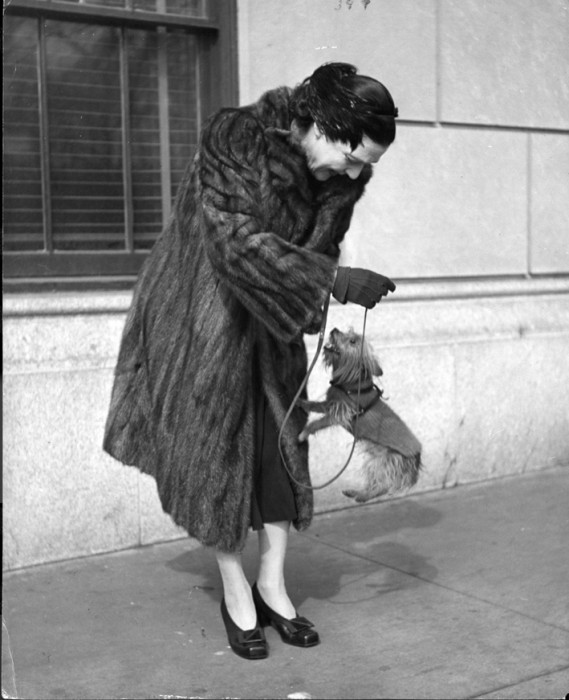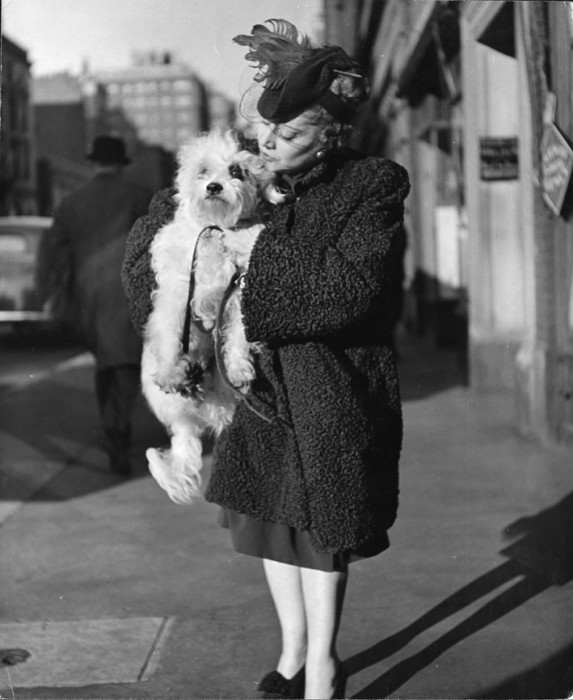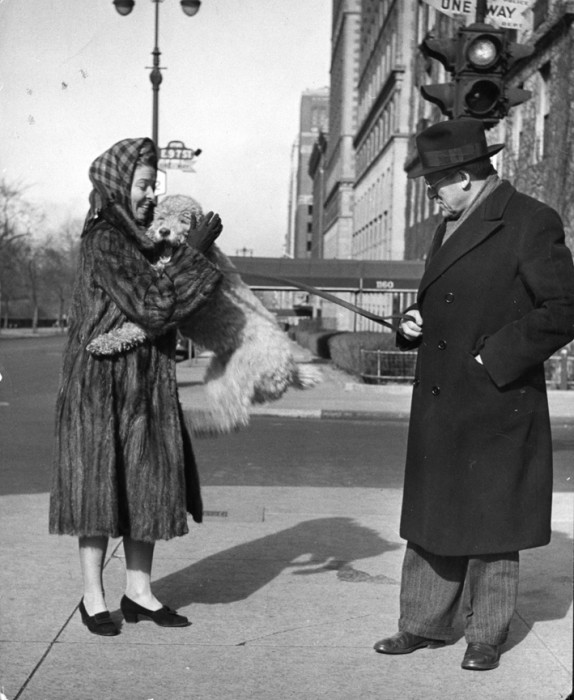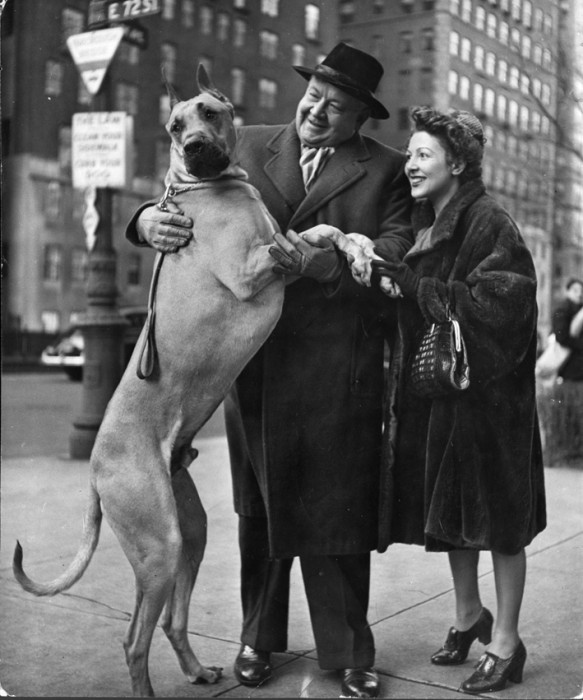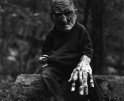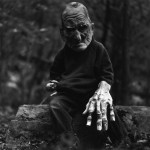Nina Leen: Lenslady
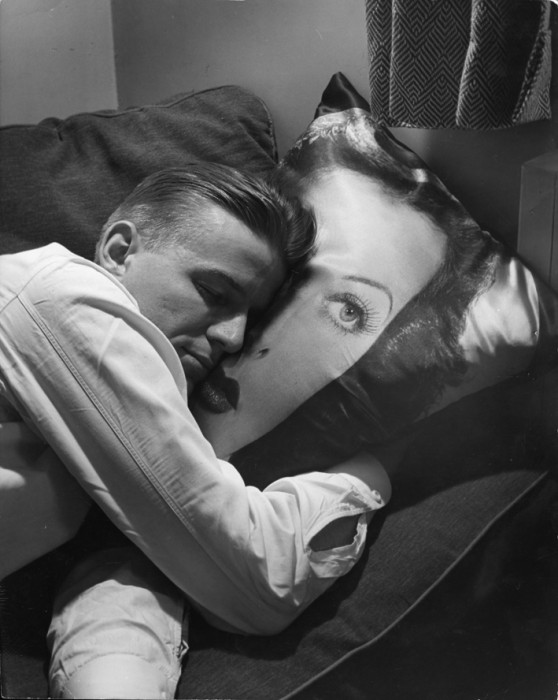 Daniel Cooney Fine Art in New York has presented some wonderful exhibitions of vintage work–for some of those featured photographers, it was the first time their work had been celebrated in a stand alone exhibition. His newest is the first solo exhibition of Nina Leen’s vintage photographs from her years as one of the first female contract photographers at LIFE magazine. Nina worked at LIFE from 1944 to 1972 until the magazine ceased weekly publication.The exhibition runs from March 26 -May 16th, 2015.
Daniel Cooney Fine Art in New York has presented some wonderful exhibitions of vintage work–for some of those featured photographers, it was the first time their work had been celebrated in a stand alone exhibition. His newest is the first solo exhibition of Nina Leen’s vintage photographs from her years as one of the first female contract photographers at LIFE magazine. Nina worked at LIFE from 1944 to 1972 until the magazine ceased weekly publication.The exhibition runs from March 26 -May 16th, 2015.
Nina was born in Russia and lived in Switzerland, Italy and Germany before immigrating to the U.S. in 1939 at the outbreak of World War II. She died in 1995 at her home in New York City. Coined Lenslady in an article that appeared in the Los Angeles Times in 1944 she was best known as a photographer of animals, teenagers and American style. One of her most famous photographic essays from 1944 documents Tommy Tucker, an orphaned and celebrated trained gray squirrel owned by Zaidee Bullis of Washington D.C. who dressed Tommy in a variety of over 30 homemade outfits including Red Cross Nurse and a Dutch–girl dress with apron and bonnet.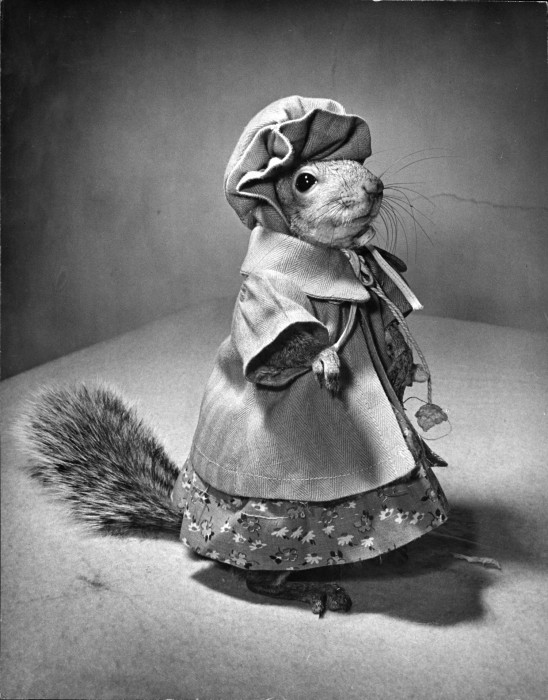
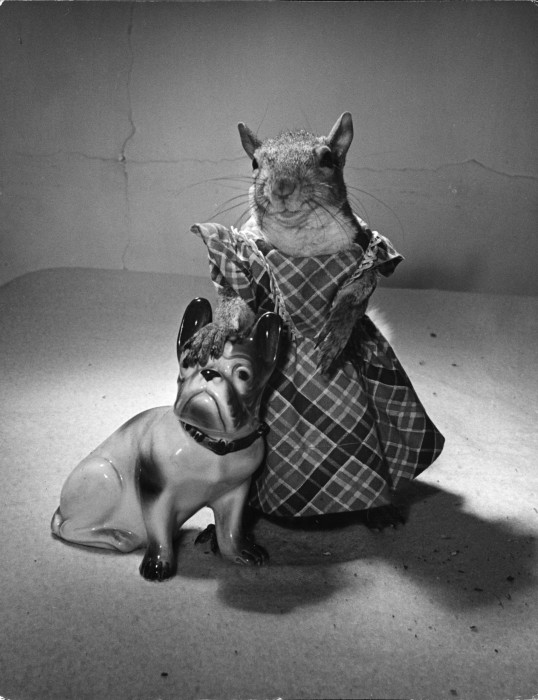 Nina Leen’s fascination with the world viewed through a camera lens extends to both the human and animal kingdom. Born in Russia, Leen grew up in Germany, Italy, and Switzerland, where she achieved acclaim as an animal photographer. Upon first arriving in the United States in 1939, her reporter’s eye led to a series of wryly amusing works on the habits and rituals of her newly adopted homeland. Her series on, “A Teenager Monopolizes the Telephone,” or her descriptions and images of “The American Male,” are timeless evocations of symbols of modern American society.
Nina Leen’s fascination with the world viewed through a camera lens extends to both the human and animal kingdom. Born in Russia, Leen grew up in Germany, Italy, and Switzerland, where she achieved acclaim as an animal photographer. Upon first arriving in the United States in 1939, her reporter’s eye led to a series of wryly amusing works on the habits and rituals of her newly adopted homeland. Her series on, “A Teenager Monopolizes the Telephone,” or her descriptions and images of “The American Male,” are timeless evocations of symbols of modern American society.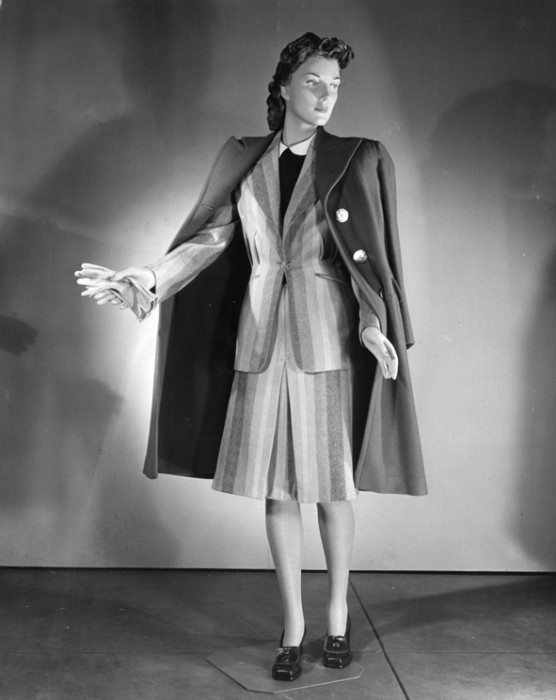 In 1945, Leen joined LIFE, producing over 40 covers and countless spreads for the magazine; her subjects included everyone from aspiring actresses like Joan Caulfield (many feel that Leen’s portrait helped launch the movie star’s career), kings and queens of Europe (many of whom appeared in rarely-seen informal poses). Whether chronicling socialites, Paris fashion models or European royalty, Leen had the gift of extreme patience. She was relaxed around her subjects; in turn, they were put at ease, virtually forgetting her presence as she captured the perfect shot.Along with her portraits of American life (one particularly ageless photograph, “Meeting Daddy on the 6:26″ shows a mother and two children eagerly waiting on the train platform, as the sun sets on this time-honored ritual of suburban life), Leen’s photographs of animals captivated and fascinated Life’s readers. She won the hearts of America with the ongoing series on her adopted pet “Lucky,” an abandoned puppy discovered by LIFE staffers Leonard McCombe and Ray Mackland and given to Leen.
In 1945, Leen joined LIFE, producing over 40 covers and countless spreads for the magazine; her subjects included everyone from aspiring actresses like Joan Caulfield (many feel that Leen’s portrait helped launch the movie star’s career), kings and queens of Europe (many of whom appeared in rarely-seen informal poses). Whether chronicling socialites, Paris fashion models or European royalty, Leen had the gift of extreme patience. She was relaxed around her subjects; in turn, they were put at ease, virtually forgetting her presence as she captured the perfect shot.Along with her portraits of American life (one particularly ageless photograph, “Meeting Daddy on the 6:26″ shows a mother and two children eagerly waiting on the train platform, as the sun sets on this time-honored ritual of suburban life), Leen’s photographs of animals captivated and fascinated Life’s readers. She won the hearts of America with the ongoing series on her adopted pet “Lucky,” an abandoned puppy discovered by LIFE staffers Leonard McCombe and Ray Mackland and given to Leen. Along with her portraits of American life (one particularly ageless photograph, “Meeting Daddy on the 6:26″ shows a mother and two children eagerly waiting on the train platform, as the sun sets on this time-honored ritual of suburban life), Leen’s photographs of animals captivated and fascinated Life’s readers. She won the hearts of America with the ongoing series on her adopted pet “Lucky,” an abandoned puppy discovered by LIFE staffers Leonard McCombe and Ray Mackland and given to Leen.
Along with her portraits of American life (one particularly ageless photograph, “Meeting Daddy on the 6:26″ shows a mother and two children eagerly waiting on the train platform, as the sun sets on this time-honored ritual of suburban life), Leen’s photographs of animals captivated and fascinated Life’s readers. She won the hearts of America with the ongoing series on her adopted pet “Lucky,” an abandoned puppy discovered by LIFE staffers Leonard McCombe and Ray Mackland and given to Leen.
 Among Leen’s most fascinating animal photographs were her masterful series on bats, published in a book, The World of Bats, with text by Alvin Novick, in 1970. For this work, Leen, long fascinated with the species she grew to call “My flying kittens” lead Leen through fetid jungles and dank caves, crouching for hours in utter darkness to achieve never-before-seen images of even the rarest species. Leen’s images for the book were called “absolutely incredible” and “breathtaking” in a review by the New York Times.
Among Leen’s most fascinating animal photographs were her masterful series on bats, published in a book, The World of Bats, with text by Alvin Novick, in 1970. For this work, Leen, long fascinated with the species she grew to call “My flying kittens” lead Leen through fetid jungles and dank caves, crouching for hours in utter darkness to achieve never-before-seen images of even the rarest species. Leen’s images for the book were called “absolutely incredible” and “breathtaking” in a review by the New York Times.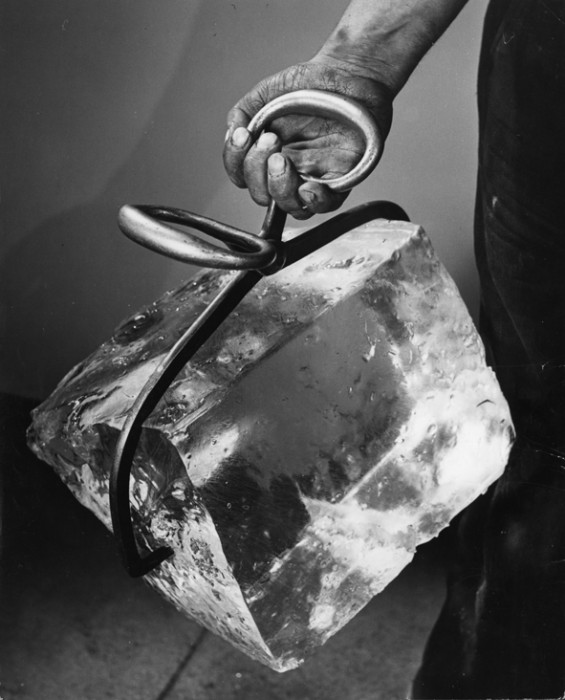 Leen’s unique ability to see the minute details of the natural world in fresh, unexpected ways is epitomized in a 1970 photograph in which skate egg cases, a common sight on East Coast beaches, seem to be dancing uproariously amidst the waves. Leen found the cases on the Long Island Shore and fascinated with their shape, added little heads made of putty as she positioned them upright. They were then superimposed against another image of the sea. The final result is arresting, exuberant, joyous–hallmarks of all of Nina Leen’s images.
Leen’s unique ability to see the minute details of the natural world in fresh, unexpected ways is epitomized in a 1970 photograph in which skate egg cases, a common sight on East Coast beaches, seem to be dancing uproariously amidst the waves. Leen found the cases on the Long Island Shore and fascinated with their shape, added little heads made of putty as she positioned them upright. They were then superimposed against another image of the sea. The final result is arresting, exuberant, joyous–hallmarks of all of Nina Leen’s images.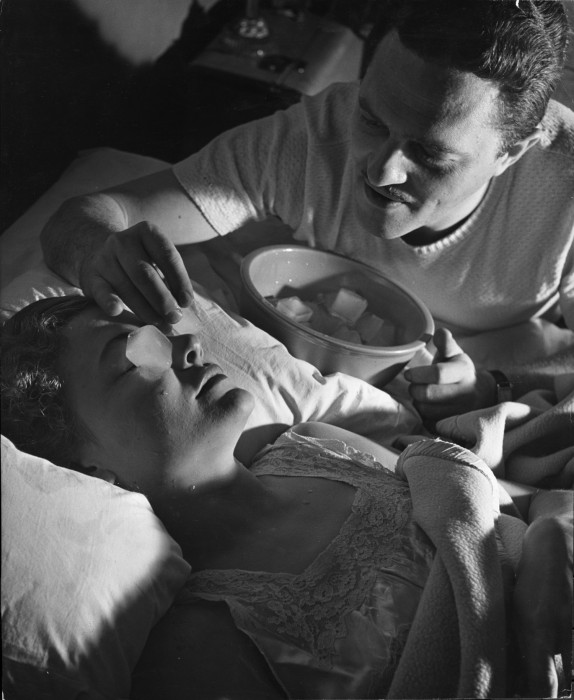
Posts on Lenscratch may not be reproduced without the permission of the Lenscratch staff and the photographer.
Recommended
-
Martin Stranka: All My StrangersDecember 14th, 2025
-
The Family Album of Ralph Eugene Meatyard at the High MuseumDecember 10th, 2025
-
Paccarik Orue: El MuquiDecember 9th, 2025
-
Richard Renaldi: Billions ServedDecember 6th, 2025
-
The Art of Documentary Photography: Rania MatarOctober 25th, 2025

